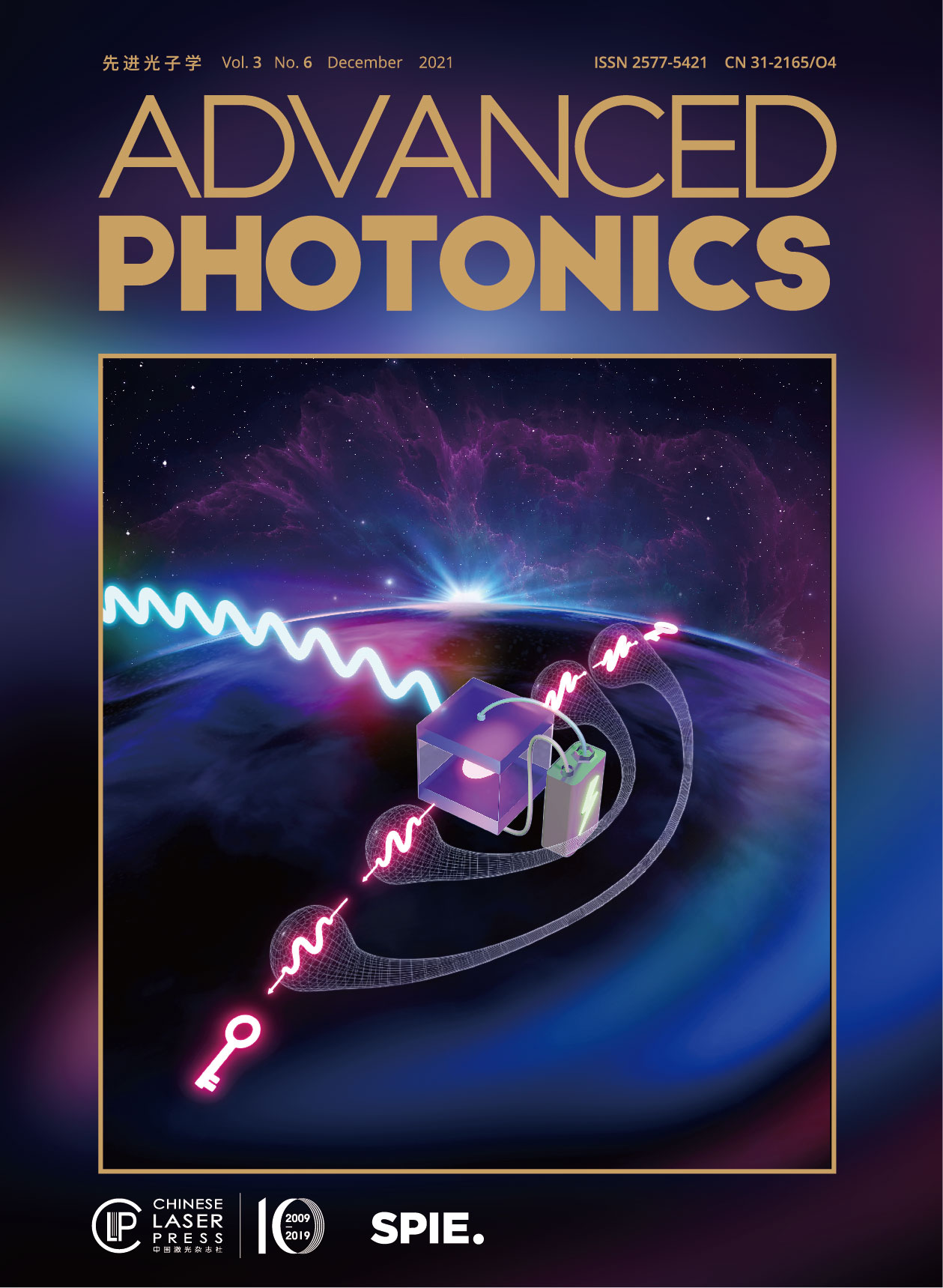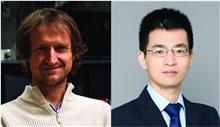
Editor(s): Mario Agio; Chao-Yang Lu
Year: 2021
Status: Published
Guest editors Chao-Yang Lu (Univ. of Science and Technology of China) and Mario Agio (Univ. of Siegen and CNR-INO) present an Advanced Photonics collection spotlighting quantum science and technologies.
Sir Peter Knight reflects on the field of quantum optics in an interview with Xiaosong Ma.
Solid-state atomic-sized color centers in wide-band-gap semiconductors, such as diamond, silicon carbide, and hexagonal boron nitride, are important platforms for quantum technologies, specifically for single-photon sources and quantum sensing. One of the emerging applications of these quantum emitters is subdiffraction imaging. This capability is provided by the specific photophysical properties of color centers, such as high dipole moments, photostability, and a variety of spectral ranges of the emitters with associated optical and microwave control of their quantum states. We review applications of color centers in traditional super-resolution microscopy and quantum imaging methods, and compare relative performance. The current state and perspectives of their applications in biomedical, chemistry, and material science imaging are outlined.
Entanglement is one of the most vital properties of quantum mechanical systems, and it forms the backbone of quantum information technologies. Taking advantage of nano/microfabrication and particularly complementary metal-oxide-semiconductor manufacturing technologies, photonic integrated circuits (PICs) have emerged as a versatile platform for the generation, manipulation, and measurement of entangled photonic states. We summarize the recent progress of quantum entanglement on PICs, starting from the generation of nonentangled and entangled biphoton states, to the generation of entangled states of multiple photons, multiple dimensions, and multiple degrees of freedom, as well as their applications for quantum information processing.
We predict theoretically a regime of photon-pair generation driven by the interplay of multiple bound states in the continuum resonances in nonlinear metasurfaces. This nondegenerate photon-pair generation is derived from the hyperbolic topology of the transverse phase matching and can enable orders-of-magnitude enhancement of the photon rate and spectral brightness, as compared to the degenerate regime. We show through comprehensive simulations that the entanglement of the photon pairs can be tuned by varying the pump polarization, which can underpin future advances and applications of ultracompact quantum light sources.
Integrated photonics provides a route to both miniaturization of quantum key distribution (QKD) devices and enhancing their performance. A key element for achieving discrete-variable QKD is a single-photon detector. It is highly desirable to integrate detectors onto a photonic chip to enable the realization of practical and scalable quantum networks. We realize a heterogeneously integrated, superconducting silicon-photonic chip. Harnessing the unique high-speed feature of our optical waveguide-integrated superconducting detector, we perform the first optimal Bell-state measurement (BSM) of time-bin encoded qubits generated from two independent lasers. The optimal BSM enables an increased key rate of measurement-device-independent QKD (MDI-QKD), which is immune to all attacks against the detection system and hence provides the basis for a QKD network with untrusted relays. Together with the time-multiplexed technique, we have enhanced the sifted key rate by almost one order of magnitude. With a 125-MHz clock rate, we obtain a secure key rate of 6.166 kbps over 24.0 dB loss, which is comparable to the state-of-the-art MDI-QKD experimental results with a GHz clock rate. Combined with integrated QKD transmitters, a scalable, chip-based, and cost-effective QKD network should become realizable in the near future.
Entanglement-based quantum key distribution (QKD) promises enhanced robustness against eavesdropping and compatibility with future quantum networks. Among other sources, semiconductor quantum dots (QDs) can generate polarization-entangled photon pairs with near-unity entanglement fidelity and a multiphoton emission probability close to zero even at maximum brightness. These properties have been demonstrated under resonant two-photon excitation (TPE) and at operation temperatures below 10 K. However, source blinking is often reported under TPE conditions, limiting the maximum achievable photon rate. In addition, operation temperatures reachable with compact cryocoolers could facilitate the widespread deployment of QDs, e.g., in satellite-based quantum communication. We demonstrate blinking-free emission of highly entangled photon pairs from GaAs QDs embedded in a p-i-n diode. High fidelity entanglement persists at temperatures of at least 20 K, which we use to implement fiber-based QKD between two buildings with an average raw key rate of 55 bits / s and a qubit error rate of 8.4%. We are confident that by combining electrical control with already demonstrated photonic and strain engineering, QDs will keep approaching the ideal source of entangled photons for real world applications.
The quantum properties of quantum measurements are indispensable resources in quantum information processing and have drawn extensive research interest. The conventional approach to revealing quantum properties relies on the reconstruction of entire measurement operators by quantum detector tomography. However, many specific properties can be determined by a part of the matrix components of the measurement operators, which makes it possible to simplify the characterization process. We propose a general framework to directly obtain individual matrix elements of the measurement operators by sequentially measuring two noncompatible observables. This method allows us to circumvent the complete tomography of the quantum measurement and extract the required information. We experimentally implement this scheme to monitor the coherent evolution of a general quantum measurement by determining the off-diagonal matrix elements. The investigation of the measurement precision indicates the good feasibility of our protocol for arbitrary quantum measurements. Our results pave the way for revealing the quantum properties of quantum measurements by selectively determining the matrix components of the measurement operators.
Experimental engineering of high-dimensional quantum states is a crucial task for several quantum information protocols. However, a high degree of precision in the characterization of the noisy experimental apparatus is required to apply existing quantum-state engineering protocols. This is often lacking in practical scenarios, affecting the quality of the engineered states. We implement, experimentally, an automated adaptive optimization protocol to engineer photonic orbital angular momentum (OAM) states. The protocol, given a target output state, performs an online estimation of the quality of the currently produced states, relying on output measurement statistics, and determines how to tune the experimental parameters to optimize the state generation. To achieve this, the algorithm does not need to be imbued with a description of the generation apparatus itself. Rather, it operates in a fully black-box scenario, making the scheme applicable in a wide variety of circumstances. The handles controlled by the algorithm are the rotation angles of a series of waveplates and can be used to probabilistically generate arbitrary four-dimensional OAM states. We showcase our scheme on different target states both in classical and quantum regimes and prove its robustness to external perturbations on the control parameters. This approach represents a powerful tool for automated optimizations of noisy experimental tasks for quantum information protocols and technologies.















